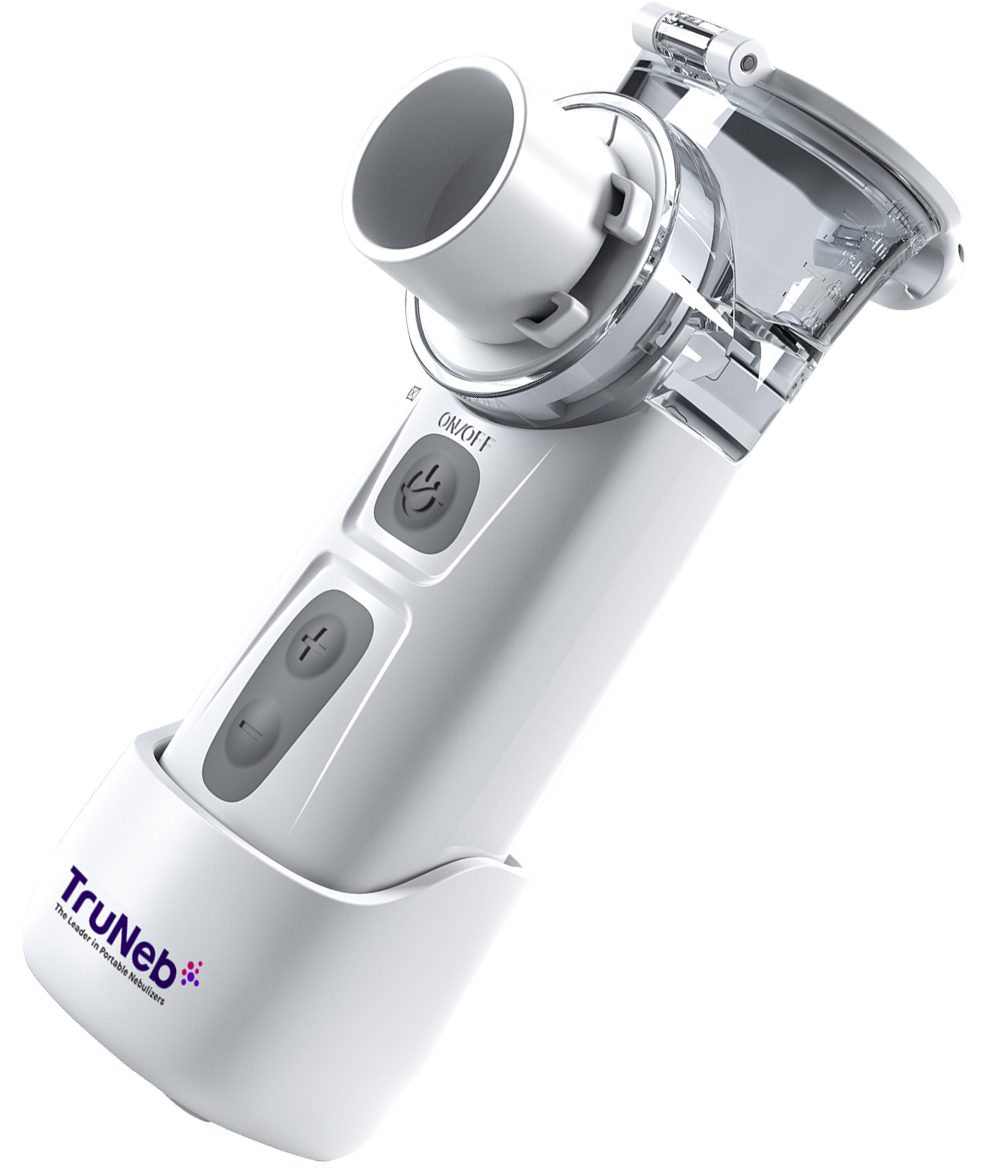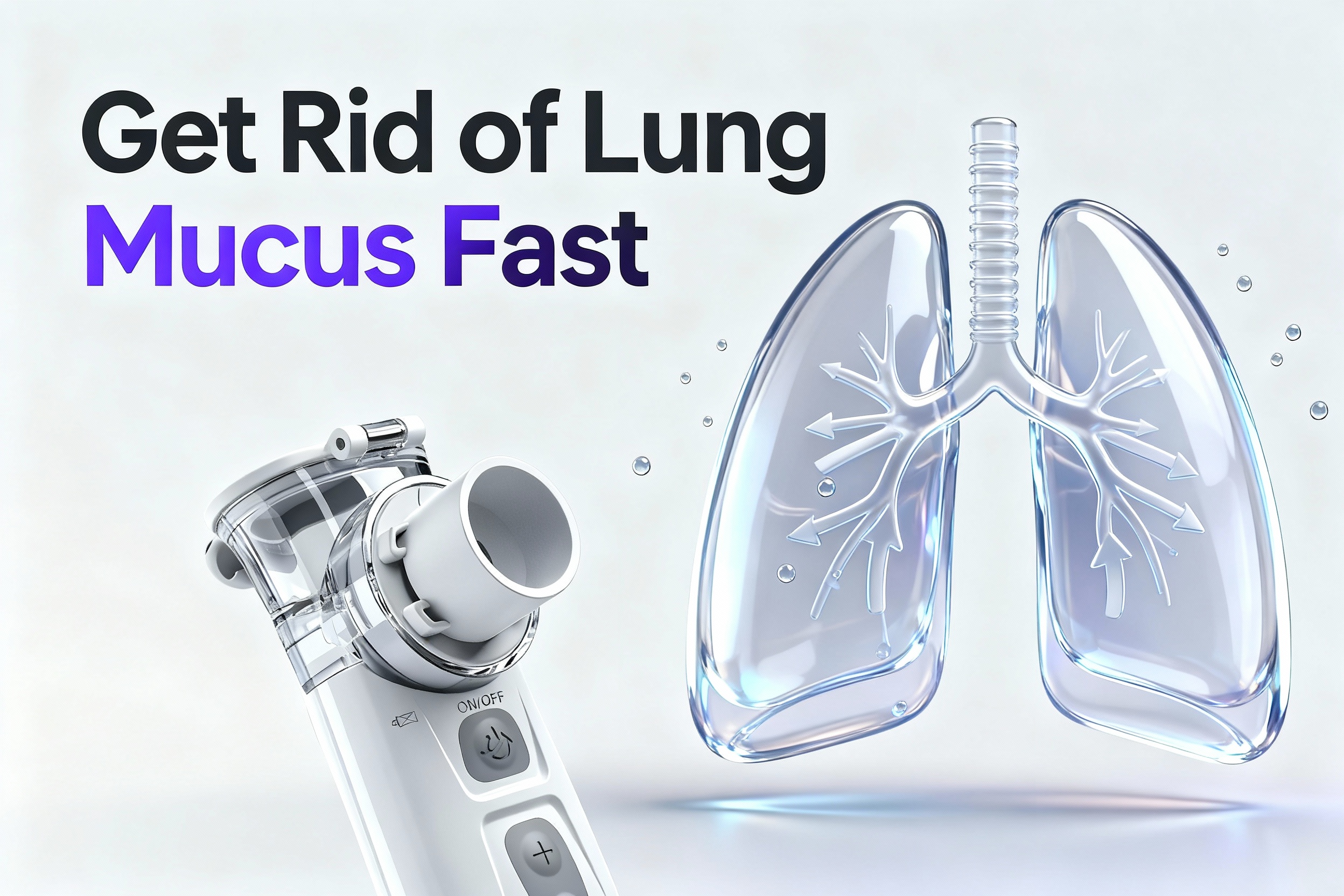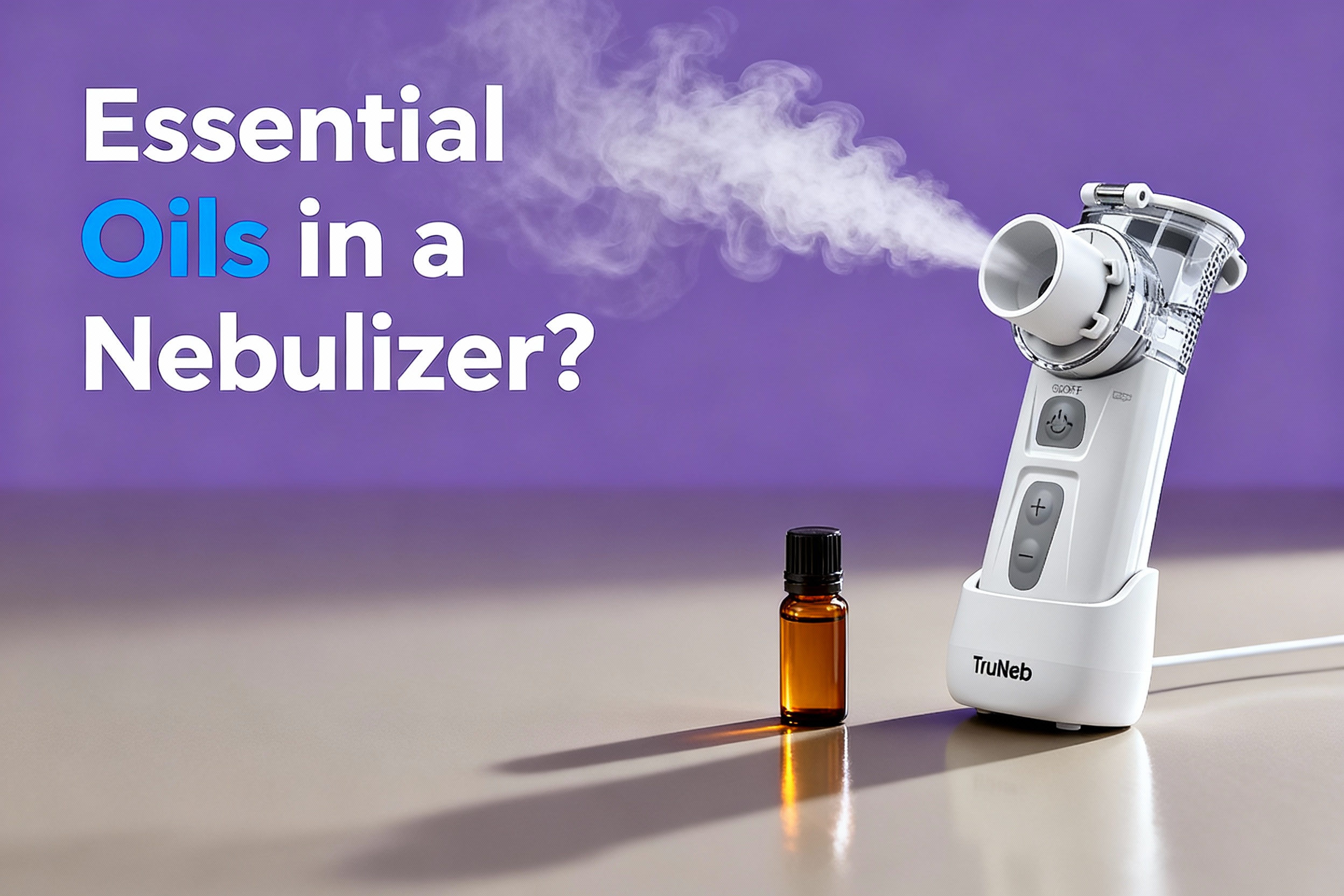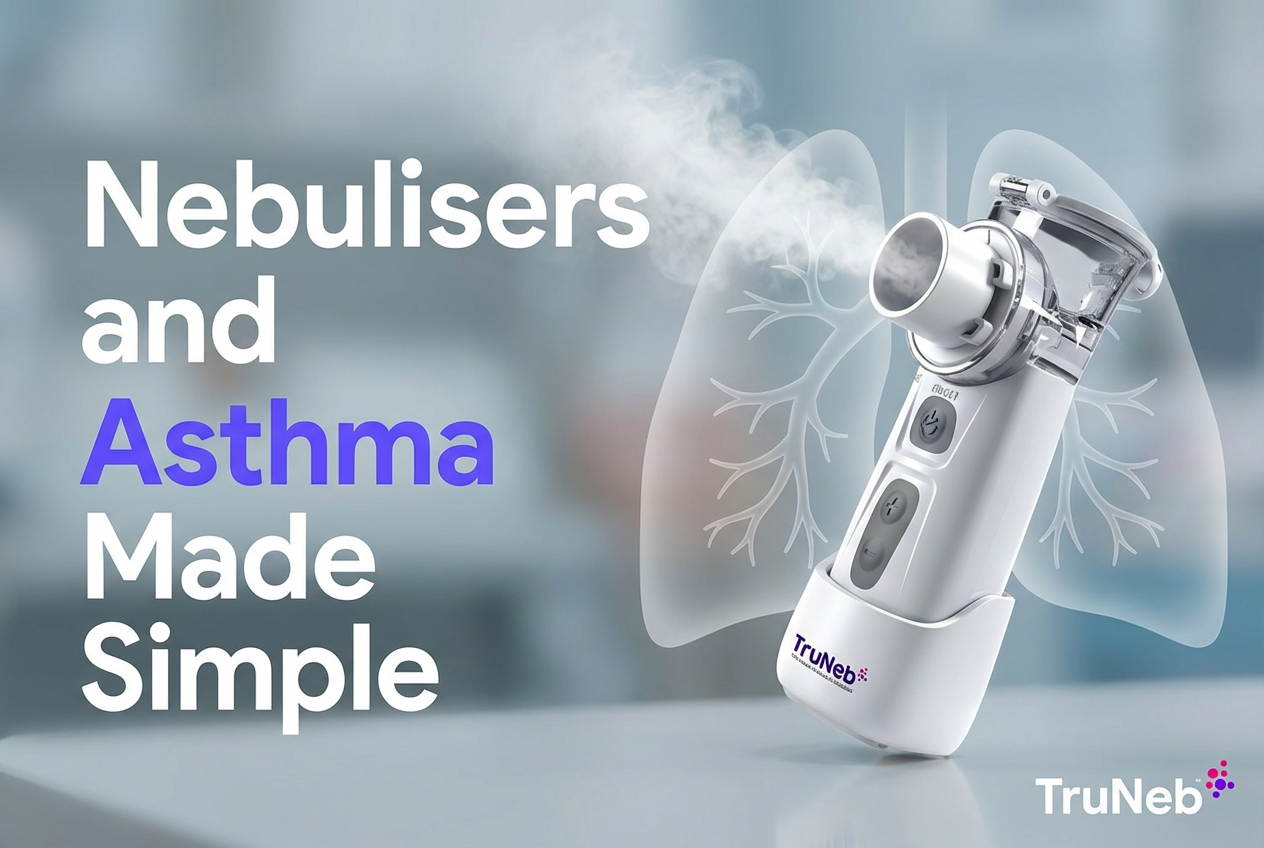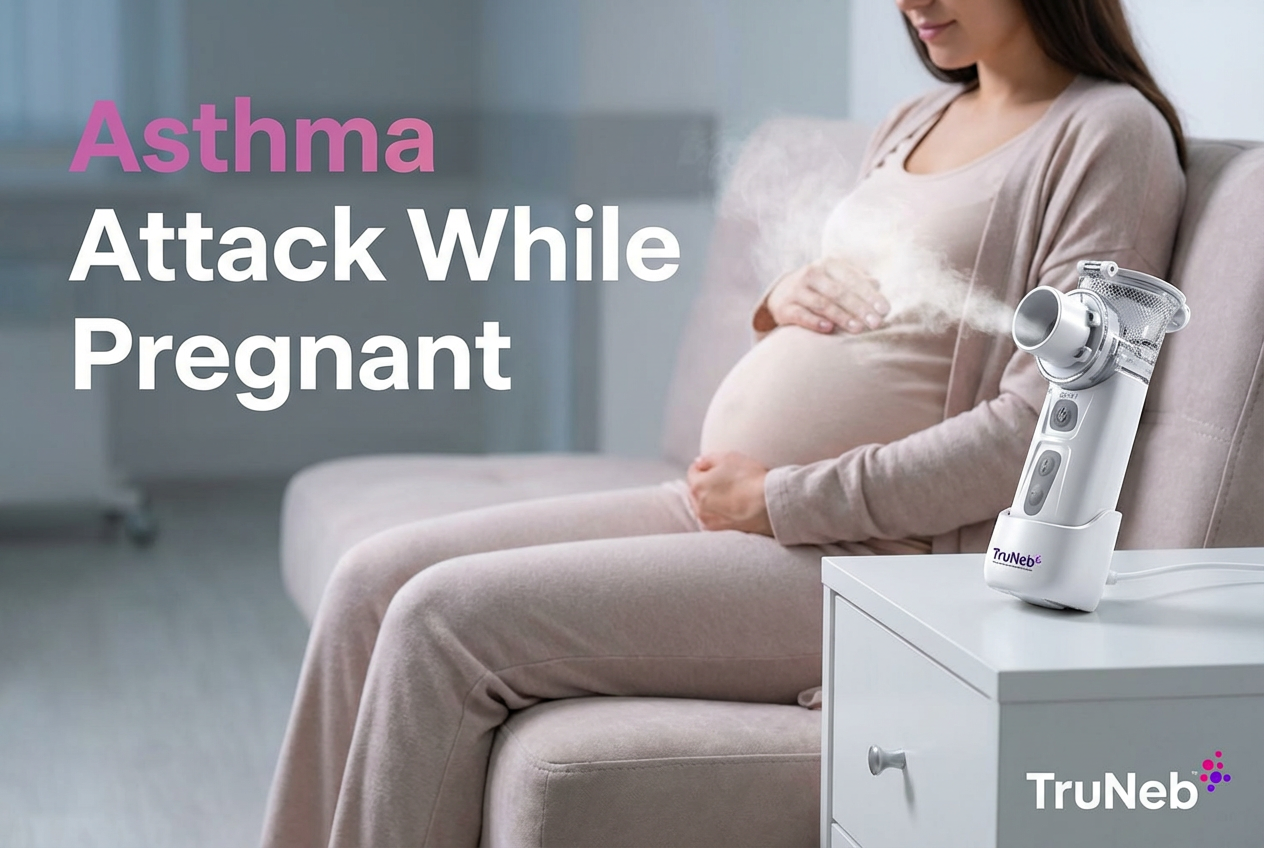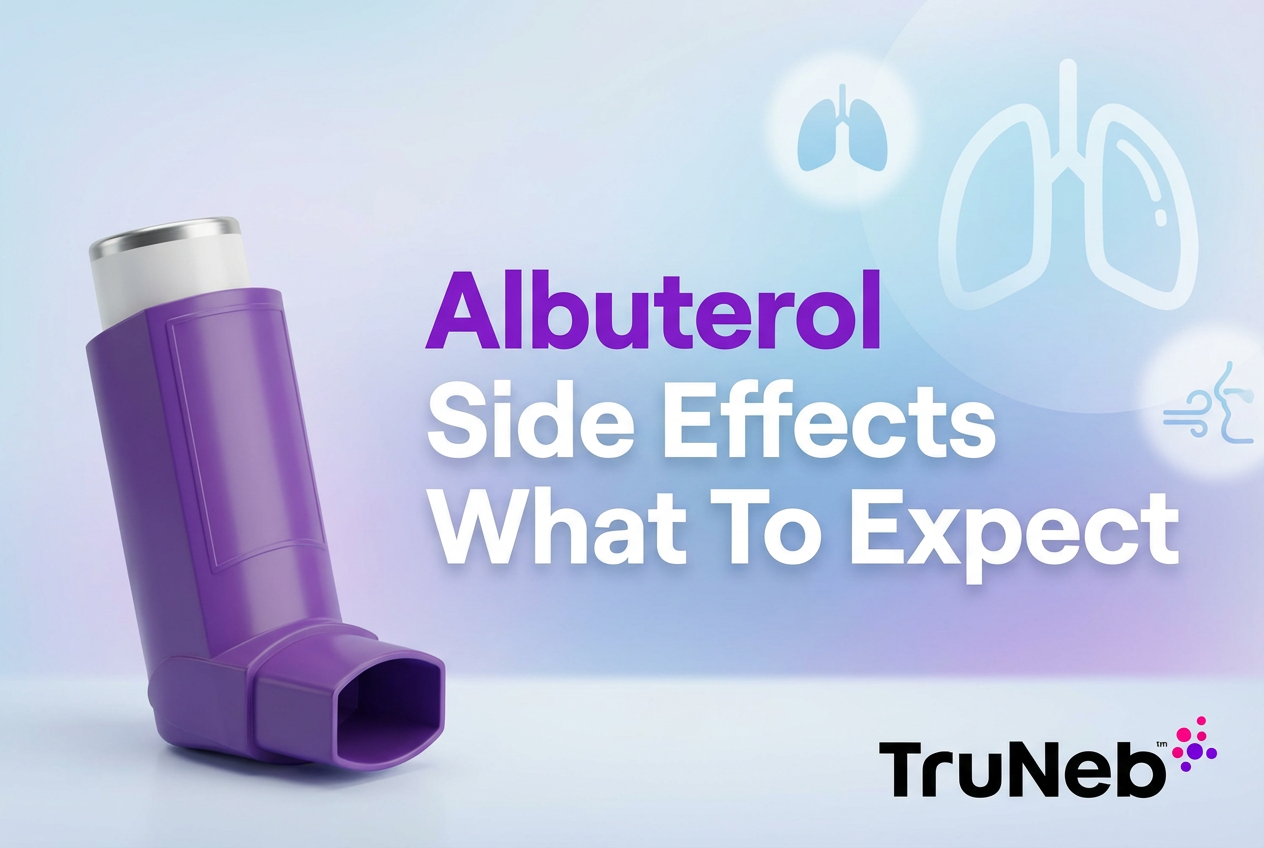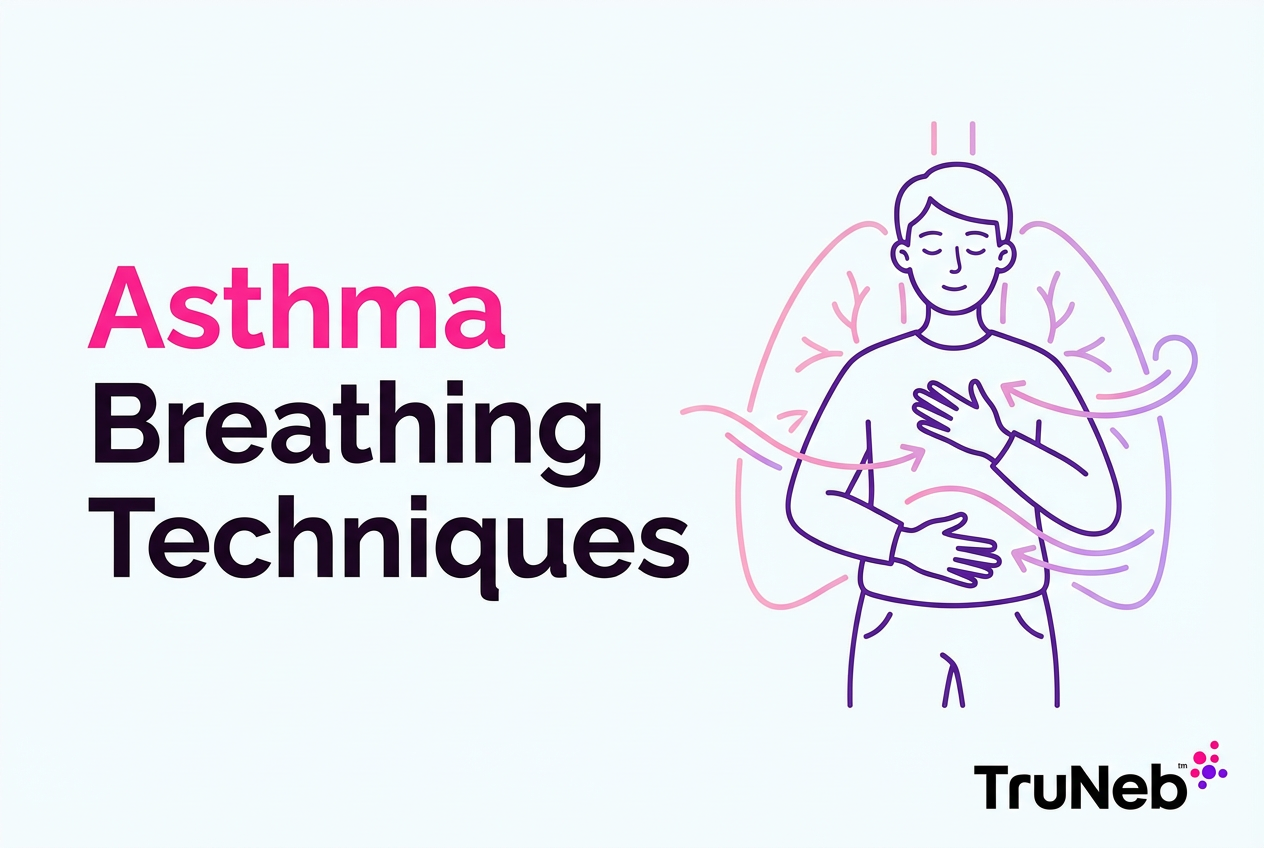On this page
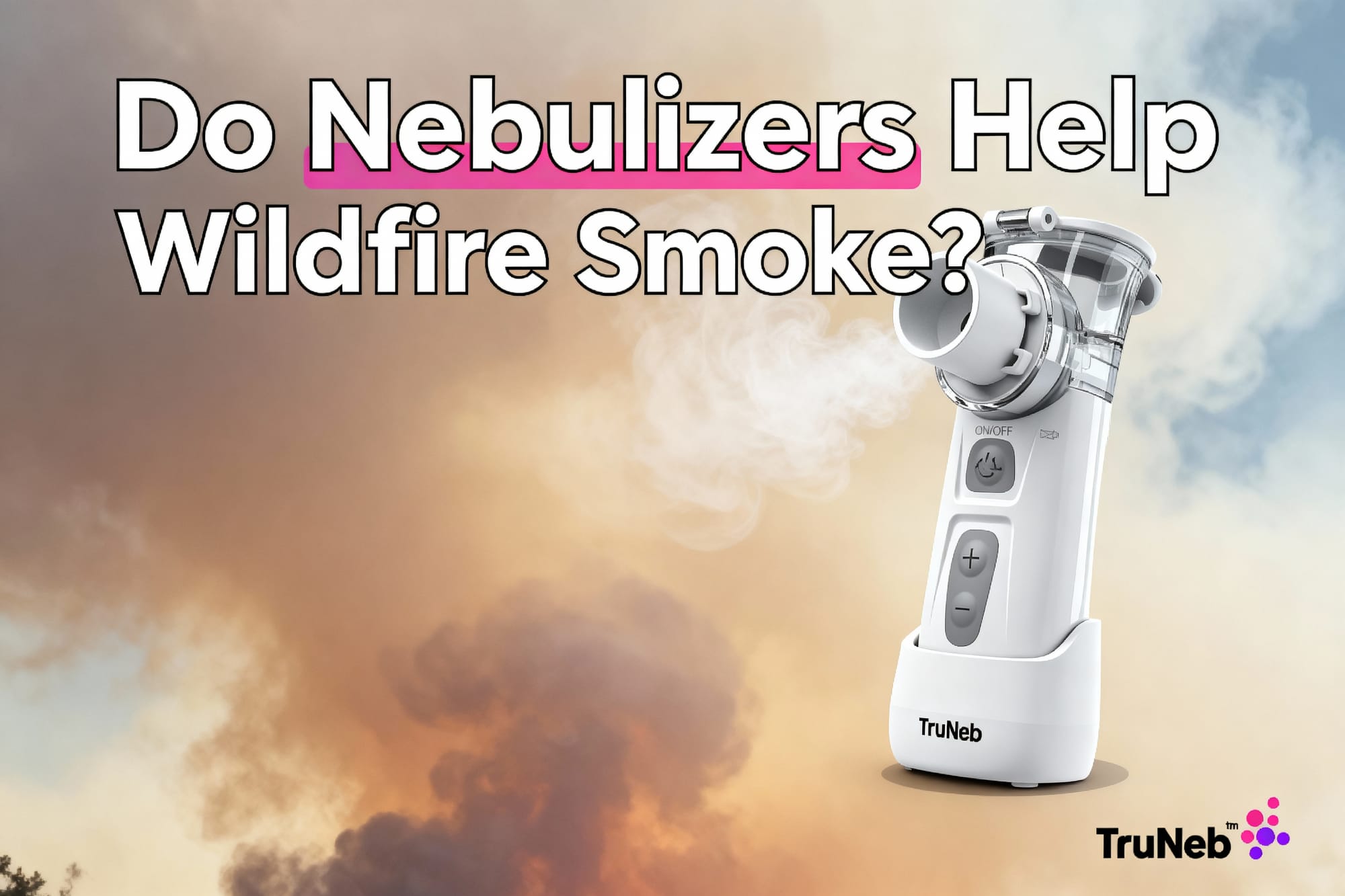
Nebulizers and Wildfire Smoke: Do They Really Help?
Yes, a nebulizer can help during wildfire smoke if your airways are tight or wheezy. It delivers medicine (like albuterol) as a mist to relax the muscles around your breathing tubes, which can ease coughing, chest tightness, and shortness of breath. But a nebulizer doesn’t remove smoke particles from your lungs or clean the air you breathe. Your first line of defense is reducing exposure and breathing cleaner air.
Key takeaway: a nebulizer can help manage symptoms, especially for people with asthma or COPD, but it isn’t a fix for smoke exposure itself.
If you don’t have a lung condition, focus on clean air, rest, and hydration. Using a medical nebulizer without a doctor’s guidance isn’t usually needed for otherwise healthy people.
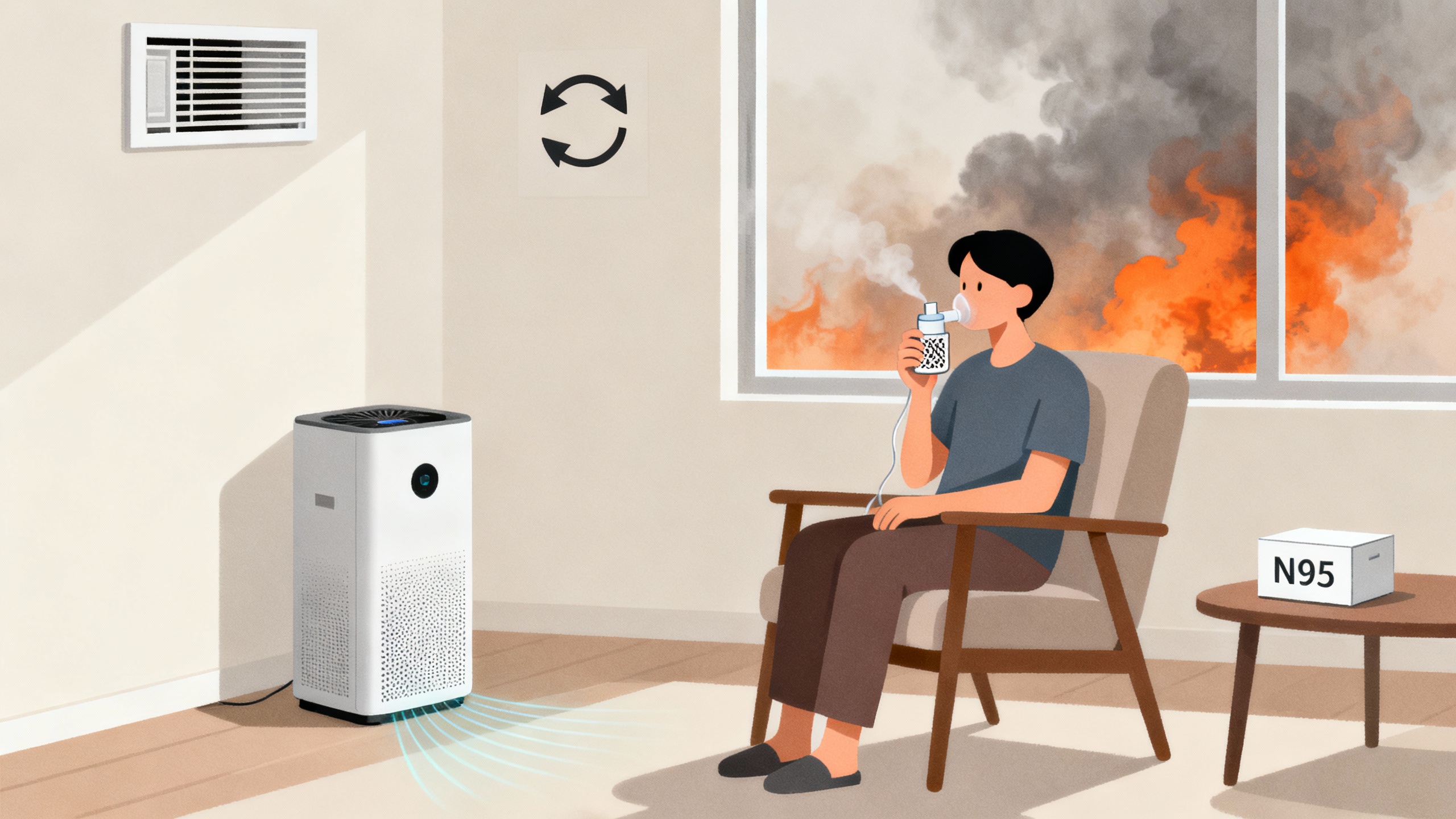
How Wildfire Smoke Affects Your Lungs and Health
Wildfire smoke is a mix of gases and tiny particles. The smallest particles, called PM2.5, can get deep into your lungs and irritate the lining of your airways. PM2.5 means particles 2.5 micrometers or smaller—about 1/30 the width of a hair—that can reach deep into the lungs.
Common symptoms include a scratchy throat, stinging eyes, coughing, chest tightness, and headaches. Children, older adults, pregnant people, and anyone with lung or heart disease are at higher risk and can feel worse on smoky days. The CDC and EPA note that PM2.5 can worsen asthma, COPD, and heart disease.
Studies link wildfire smoke to more use of quick-relief asthma medicines and more urgent care visits. Having a plan to avoid smoke and treat symptoms helps.
Takeaway: wildfire smoke’s fine particles (PM2.5) irritate and inflame airways and can trigger asthma and COPD flare-ups.
What a Nebulizer Does (and What It Can’t Do)
A nebulizer turns liquid medicine into a fine mist you breathe in through a mask or mouthpiece. It’s commonly used to deliver bronchodilators like albuterol to relax tight airway muscles. Some people also nebulize sterile saline to add moisture, which can soothe dry, irritated airways.
Only nebulize medicines or sterile saline approved by your doctor. Use only sterile saline labeled for inhalation; don’t nebulize homemade mixtures. Steam inhalers are NOT nebulizers and aren’t for delivering prescription meds. In severe clinic-treated flares, doctors sometimes add ipratropium or a corticosteroid under medical supervision.
What it can’t do: a nebulizer isn’t an air filter. It won’t remove smoke from your home or pull soot out of your lungs. For smoke days, think of a nebulizer as a symptom reliever, not a smoke cleaner.
If you already have a prescription and a plan, a nebulizer can be part of your toolkit. If you don’t, focus on avoiding smoke and talk with a doctor before starting any medication.
Takeaway: a nebulizer delivers medicine or sterile saline as a mist; it’s a treatment device, not an air filter.
Quick comparison: Nebulizers, inhalers, steam, and air purifiers
| Method | What it does | Helps smoke symptoms? | Removes smoke from lungs/air? | Best for |
|---|---|---|---|---|
| Nebulizer (with albuterol) | Delivers bronchodilator medicine as mist | Yes — wheezing, chest tightness, shortness of breath | No | Asthma/COPD flare-ups triggered by smoke |
| Inhaler (albuterol) | Delivers quick‑relief bronchodilator puffs | Yes — wheezing, tightness | No | Fast relief for people who use inhalers well |
| Nebulized sterile saline (no meds) | Adds moisture to airways | Sometimes — soothes dryness, loosens mucus | No | Mild irritation or dryness |
| Steam (shower/bowl) | Provides warm, moist air to upper airways | Sometimes — soothes nose/throat | No | Simple comfort for mild symptoms |
| HEPA air purifier | Filters PM2.5 from indoor air | Reduces ongoing irritation by lowering exposure | Indoor air only — not lungs | Creating a “clean room” at home |
Note: HEPA air purifiers clean indoor air; they do not remove particles already in your lungs. For outdoor exposure, use a well‑fitted N95 respirator.
When (and Who) Should Use a Nebulizer During Wildfire Smoke?
If you have asthma or COPD
Smoke can trigger a flare. Follow your action plan and use your quick-relief medicine (albuterol) by inhaler or nebulizer as directed. Keep your reliever nearby on smoky days. If you need frequent doses, or if symptoms don’t improve, contact your doctor or seek urgent care. If you’re needing rescue treatments more than usual or they aren’t helping, contact your doctor. In severe clinic-treated flares, doctors sometimes add ipratropium or a corticosteroid.
If you don’t have a lung condition
Your priority is clean air and rest. A nebulizer with medicine is usually not needed. Using a relative’s prescription can cause side effects—don’t use another person’s prescription. If you have access to a nebulizer and sterile saline, moisture can soothe dryness, but it’s optional. Use only sterile saline labeled for inhalation. A steamy shower can offer similar comfort. If breathing becomes hard or you can’t catch your breath, get medical care right away.
Takeaway: use a nebulizer if your doctor has prescribed it for asthma or COPD symptoms triggered by smoke.
Other Ways to Protect Your Lungs from Wildfire Smoke
- Stay indoors and clean the air. Close windows and doors, set HVAC to recirculate, and use a HEPA air purifier in the rooms you use most. Change filters as directed. The CDC and EPA recommend reducing exposure to PM2.5 whenever possible.
- Create a clean room. Pick one room, run a purifier, and keep doors closed for a low-smoke space.
- Wear a proper respirator outside. Choose a NIOSH-approved N95 or P100 and check the seal. Cloth or surgical masks don’t block PM2.5 well.
- Hydrate and rest. Drink water to keep airways moist, and avoid strenuous exercise when the AQI is high.
- Gentle breathing work. In clean air, deep breathing and controlled coughs can help loosen mucus.
- Nutrition support (optional). Fruits and vegetables rich in antioxidants can support overall recovery. Some clinics discuss nebulized antioxidants like glutathione; research is limited. Don’t try without your doctor’s guidance.
- Watch your symptoms. If breathing worsens or you feel dizzy, confused, or have chest pain, seek care.
- Check the AQI. Plan your day around cleaner air times at AirNow.gov.
There’s no instant “lung detox” — clean air, rest, hydration, and time are what help.
Takeaway: your best protection is reducing exposure—stay indoors with HEPA filtration and wear an N95 if you must go outside.
Safety note
- Use medicines as prescribed. Don’t start, stop, or change a prescription without medical advice.
- Talk to your doctor before trying a new medication. This includes nebulized solutions and alternative therapies.
- Use only sterile saline. Use sterile saline labeled for inhalation; don’t nebulize homemade mixtures.
- Have a backup plan. Keep rescue meds and an N95 ready during smoke season.
⚠️ If you have severe symptoms like trouble breathing at rest, bluish lips/face, confusion, or chest pain, call emergency services immediately.
Talk to your doctor if symptoms don’t improve after a day or two in clean air or if you’re needing rescue treatments more than usual.
A TruNeb™ portable mesh nebulizer can make relief easier when you’re away from home, but it’s one part of a broader smoke plan focused on clean air and symptom control.
Frequently Asked Questions
Tap or click a question below to see the answer:
Yes. If smoke has triggered bronchospasm (wheezing, chest tightness), albuterol via inhaler or nebulizer can relax airway muscles and improve breathing. It doesn’t remove smoke particles from your lungs.
Not directly. A nebulizer delivers medicine or moisture; it doesn’t vacuum soot out. Your body clears particles over time via cilia and mucus. Clean air, hydration, and rest help that process.
Steam can soothe the nose and throat. A nebulizer can deliver medication deep into the lungs for bronchospasm. They serve different purposes and aren’t interchangeable.
Wear a well-fitted N95 (preferably NIOSH-approved), keep trips short, and plan around lower AQI times. Back at home, run a HEPA purifier and rest. Check AirNow.gov to track local air quality.
Minor irritation typically eases within a few days in clean air; heavier exposures can take longer. If symptoms persist or worsen, talk to your doctor.
Conclusion: Breathe Easier When the Air Isn’t
A nebulizer can help manage smoke-induced symptoms, especially if you have asthma or COPD, but it won’t clean smoke from your lungs. Your best combo is simple: reduce exposure, filter your indoor air, wear an N95 when needed, and use prescribed medicines as directed. Check your AQI each morning during smoke season and keep your rescue meds handy if you have asthma or COPD.
Takeaway: pair exposure reduction with prescribed relief treatments for the safest way to get through smoky days.
Disclaimer: This article is for informational purposes only and isn’t a substitute for professional medical advice. Always talk to your doctor about your symptoms, treatments, and devices.

